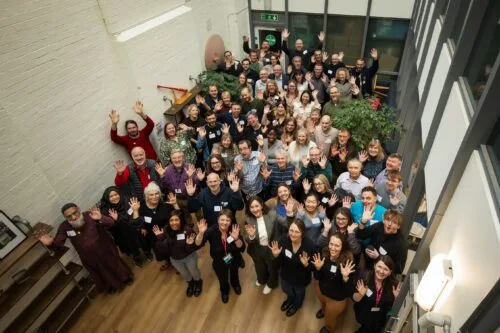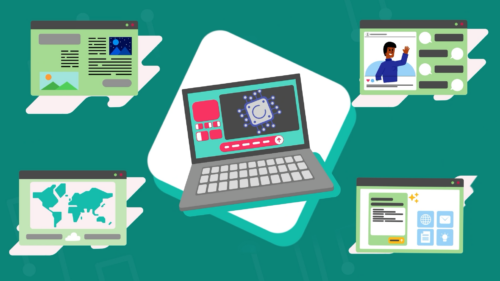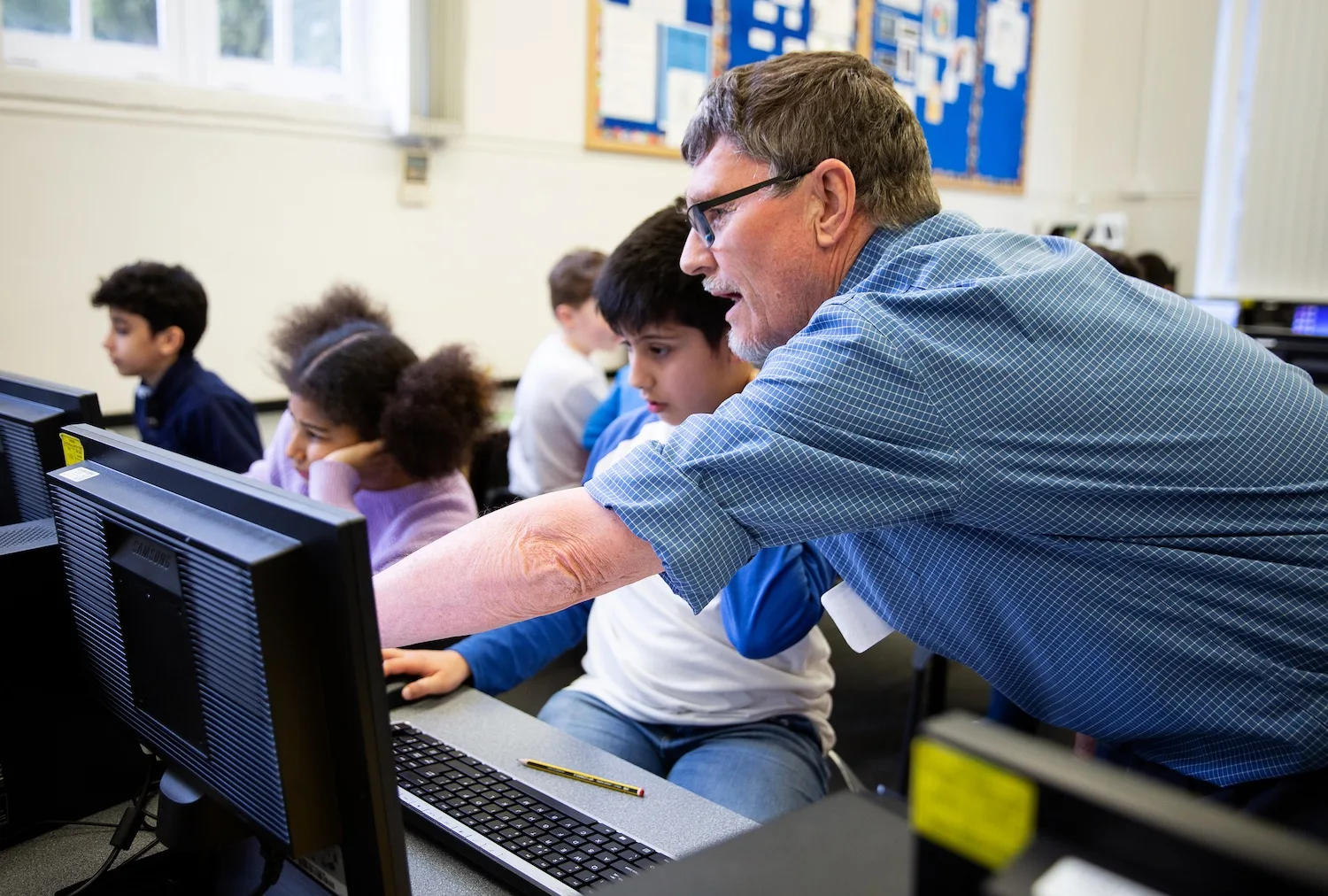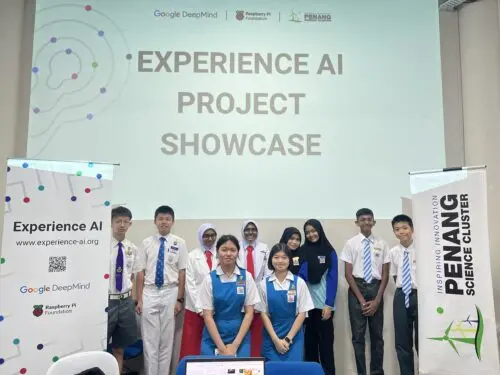Schlagwort: AI education
-

Supporting teachers to integrate AI in K–12 CS education
Reading Time: 5 minutesTeaching about artificial intelligence (AI) is a growing challenge for educators around the world. In our current seminar series, we are gaining insights from international computing education researchers on how to teach about AI and data science in the classroom. In our second seminar, Franz Jetzinger from the Technical University of Munich,…
-

Teaching about AI – Teacher symposium
Reading Time: 5 minutesAI has become a pervasive term that is heard with trepidation, excitement, and often a furrowed brow in school staffrooms. For educators, there is pressure to use AI applications for productivity — to save time, to help create lesson plans, to write reports, to answer emails, etc. There is also a lot…
-

UNESCO’s International Day of Education 2025: AI and the future of education
Reading Time: 6 minutesRecently, our Chief Learning Officer Rachel Arthur and I had the opportunity to attend UNESCO’s International Day of Education 2025, which focused on the role of education in helping people “understand and steer AI to better ensure that they retain control over this new class of technology and are able to direct…
-

Helping young people navigate AI safely
Reading Time: 5 minutesAI safety and Experience AI As our lives become increasingly intertwined with AI-powered tools and systems, it’s more important than ever to equip young people with the skills and knowledge they need to engage with AI safely and responsibly. AI literacy isn’t just about understanding the technology — it’s about fostering critical…
-

Ocean Prompting Process: How to get the results you want from an LLM
Reading Time: 5 minutesHave you heard of ChatGPT, Gemini, or Claude, but haven’t tried any of them yourself? Navigating the world of large language models (LLMs) might feel a bit daunting. However, with the right approach, these tools can really enhance your teaching and make classroom admin and planning easier and quicker. That’s where the…
-

Exploring how well Experience AI maps to UNESCO’s AI competency framework for students
Reading Time: 9 minutesDuring this year’s annual Digital Learning Week conference in September, UNESCO launched their AI competency frameworks for students and teachers. What is the AI competency framework for students? The UNESCO competency framework for students serves as a guide for education systems across the world to help students develop the necessary skills in…
-

Teaching about AI in schools: Take part in our Research and Educator Community Symposium
Reading Time: 4 minutesWorldwide, the use of generative AI systems and related technologies is transforming our lives. From marketing and social media to education and industry, these technologies are being used everywhere, even if it isn’t obvious. Yet, despite the growing availability and use of generative AI tools, governments are still working out how and…
-

How to make debugging a positive experience for secondary school students
Reading Time: 6 minutesArtificial intelligence (AI) continues to change many areas of our lives, with new AI technologies and software having the potential to significantly impact the way programming is taught at schools. In our seminar series this year, we’ve already heard about new AI code generators that can support and motivate young people when…
-

Hello World #25 out now: Generative AI
Reading Time: 3 minutesSince they became publicly available at the end of 2022, generative AI tools have been hotly discussed by educators: what role should these tools for generating human-seeming text, images, and other media play in teaching and learning? Two years later, the one thing most people agree on is that, like it or…
-

Free online course on understanding AI for educators
Reading Time: 5 minutesTo empower every educator to confidently bring AI into their classroom, we’ve created a new online training course called ‘Understanding AI for educators’ in collaboration with Google DeepMind. By taking this course, you will gain a practical understanding of the crossover between AI tools and education. The course includes a conceptual look…
-

How useful do teachers find error message explanations generated by AI? Pilot research results
Reading Time: 7 minutesAs discussions of how artificial intelligence (AI) will impact teaching, learning, and assessment proliferate, I was thrilled to be able to add one of my own research projects to the mix. As a research scientist at the Raspberry Pi Foundation, I’ve been working on a pilot research study in collaboration with Jane…
-

Impact of Experience AI: Reflections from students and teachers
Reading Time: 5 minutes“I’ve enjoyed actually learning about what AI is and how it works, because before I thought it was just a scary computer that thinks like a human,” a student learning with Experience AI at King Edward’s School, Bath, UK, told us. This is the essence of what we aim to do with…
-

Experience AI: How research continues to shape the resources
Reading Time: 5 minutesSince we launched the Experience AI learning programme in the UK in April 2023, educators in 130 countries have downloaded Experience AI lesson resources. They estimate reaching over 630,000 young people with the lessons, helping them to understand how AI works and to build the knowledge and confidence to use AI tools…
-

Experience AI at UNESCO’s Digital Learning Week
Reading Time: 5 minutesLast week, we were honoured to attend UNESCO’s Digital Learning Week conference to present our free Experience AI resources and how they can help teachers demystify AI for their learners. The conference drew a worldwide audience in-person and online to hear about the work educators and policy makers are doing to support…
-

Experience AI expands to reach over 2 million students
Reading Time: 4 minutesTwo years ago, we announced Experience AI, a collaboration between the Raspberry Pi Foundation and Google DeepMind to inspire the next generation of AI leaders. Today I am excited to announce that we are expanding the programme with the aim of reaching more than 2 million students over the next 3 years,…
-

Why we’re taking a problem-first approach to the development of AI systems
Reading Time: 7 minutesIf you are into tech, keeping up with the latest updates can be tough, particularly when it comes to artificial intelligence (AI) and generative AI (GenAI). Sometimes I admit to feeling this way myself, however, there was one update recently that really caught my attention. OpenAI launched their latest iteration of ChatGPT,…
-

New guide on using generative AI for teachers and schools
Reading Time: 5 minutesThe world of education is loud with discussions about the uses and risks of generative AI — tools for outputting human-seeming media content such as text, images, audio, and video. In answer, there’s a new practical guide on using generative AI aimed at Computing teachers (and others), written by a group of…
-

Four key learnings from teaching Experience AI lessons
Reading Time: 4 minutesDeveloped by us and Google DeepMind, Experience AI provides teachers with free resources to help them confidently deliver lessons that inspire and educate young people about artificial intelligence (AI) and the role it could play in their lives. Tracy Mayhead is a computer science teacher at Arthur Mellows Village College in Cambridgeshire.…
-

Imagining students’ progression in the era of generative AI
Reading Time: 6 minutesGenerative artificial intelligence (AI) tools are becoming more easily accessible to learners and educators, and increasingly better at generating code solutions to programming tasks, code explanations, computing lesson plans, and other learning resources. This raises many questions for educators in terms of what and how we teach students about computing and AI,…
-

Localising AI education: Adapting Experience AI for global impact
Reading Time: 6 minutesIt’s been almost a year since we launched our first set of Experience AI resources in the UK, and we’re now working with partner organisations to bring AI literacy to teachers and students all over the world. Developed by the Raspberry Pi Foundation and Google DeepMind, Experience AI provides everything that teachers…
-

The Experience AI Challenge: Find out all you need to know
Reading Time: 3 minutesWe’re really excited to see that Experience AI Challenge mentors are starting to submit AI projects created by young people. There’s still time for you to get involved in the Challenge: the submission deadline is 24 May 2024. If you want to find out more about the Challenge, join our live webinar…
-

Teaching about AI explainability
Reading Time: 6 minutesIn the rapidly evolving digital landscape, students are increasingly interacting with AI-powered applications when listening to music, writing assignments, and shopping online. As educators, it’s our responsibility to equip them with the skills to critically evaluate these technologies. A key aspect of this is understanding ‘explainability’ in AI and machine learning (ML)…





















